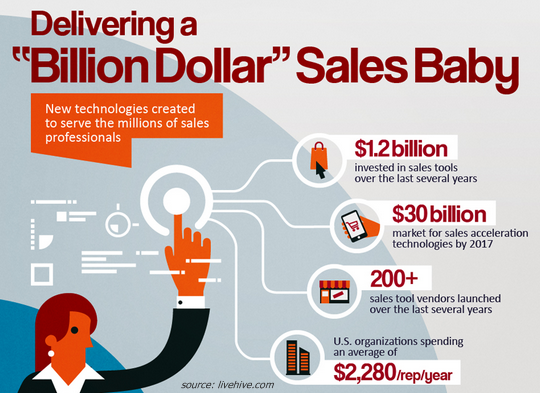Just as Moneyball changed baseball through science, new advances in predictive analytics are changing how companies approach sales. So much, in fact, this year's Dreamforce features some great sales acceleration case study sessions from big name companies.
HR processing disruptor and $4.5 billion valuated Zenefits is slated to describe how sales acceleration technology helped them target high-value prospects. Bridging the gap from strategy to execution, Motorola will host an interactive Dreamforce session on the essentials to driving sales velocity, productivity and results. The company's Motorola Solutions arm optimized their platform through "Voice of Sales" engagement, cross-regional collaboration, and sales enablers.
Predicted to be one of 2015's hottest technology trends, sales acceleration platforms fueled by data-driven insight and predictive analytics technology, are shifting a montage of industries to an accelerated sales economy. "What drives velocity in the sales process is the cloud coupled with deep industry relevance," shares David Schmaier, CEO of Vlocity. Investors seem to agree, and are biting, with funding for sales acceleration technologies now exceeding $1.2 billion.
Agile, consumer responsive product development is driving the ongoing evolution of sales acceleration, and along with it, creating a shift in how businesses approach sales strategy. Just as you've already researched and identified a new pair of jeans before the young sales clerk approaches you, today's B2B buyers are often more than halfway through the purchasing cycle before engaging with sellers.
Modern buyers are no longer limited to sales collateral and specs as the preeminent source for information. They're visiting vendor-agnostic marketplaces, reading vendor reviews, and tapping into social media channels for product recommendations. Sales acceleration exists because in this new world it's insufficient just to work faster. "Doing more alone, even with a CRM, leads to chaos," remarks Nick Hedges, CEO & President of advanced sales platform, Velocify. "Sales acceleration brings both speed and control to the sales process, allowing sales reps to operate at high speed while following an optimized sales process."
Sales engagement, enablement, and automation all make up the new sales acceleration solutions giving sales organizations a comprehensive, smarter understanding of today's buyer. The exciting opportunity from sales acceleration is foster a working, collaborative intersection between marketing and sales disciplines. While marketing automation tools helped bringing more science and predictability to marketing teams, the insight and functionality ends once it reaches the sales cycle.
Right now, only 24 percent of marketers have a defined lead handoff process and agreement with their sales teams. Sales acceleration solutions are set to change that, serving as the progression of customer insight to and through the entire sales process. Activity-based enablement, which maximizes reps' time spent in the programs they use to generate revenue, is a major trend in sales acceleration. "We expect to see more firms adopting technologies that seamlessly integrate with platforms like Salesforce and Outlook because they allow reps to spend more of their time doing the revenue-generating activities that help them beat quota," explains Doug Winter, CEO of Seismic.
That's what is so exciting about this fast-growing space. Where datasets like customer location, proximity, and social sentiment were once immeasurable, new sales acceleration tools are able to capture that information from mobile devices, creating smarter, data-driven sales strategies. With 33 billion Internet-connected devices, expected to be operational by 2020, all sorts of data and revenue opportunities become both powerful and readily available.
Adopters of sales acceleration platforms are now able to calculate ROI, increase qualified prospects, improve win rates, and reduce sales cycles. That's what you can expect to hear about at Dreamforce: ROI and how all this ties into your CRM foundation. ROI calculators can help organizations identify baseline figures to use in calculation of returns. Average deal value and close rates, paired with sales cycle length make up a SalesVelocity Equation (# deals, average deal size, % close, length of sales cycle) to formulate the ROI of sales acceleration tools for sales teams.
While some sales acceleration features overlap with an existing CRM ecosystem like Salesforce.com, at the same time, they pull essential data from the necessary business tools. Salesforce's Pardot marketing automation system, for example can score and grade your leads, identifying those ready to buy, and feeding that critical data to sales acceleration platforms.
All said, sales acceleration technology is the answer to today's data-driven revolution, placing both consumers and sales reps on an equal playing field. These new solutions are helping companies align marketing and sales teams while cutting costs, thereby building better customer relationships, improving communication, and enabling organizations to measure, prove, and boost ROI.
That, after all, is what Dreamforce is all about.


